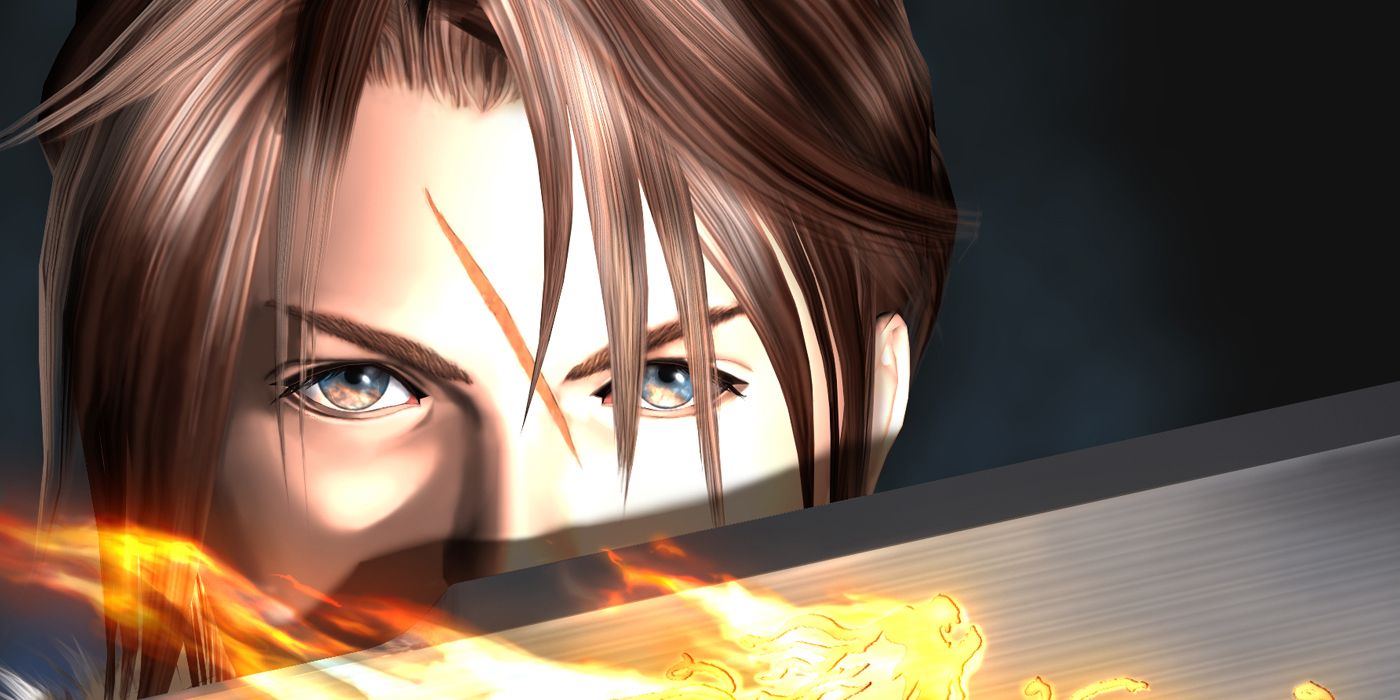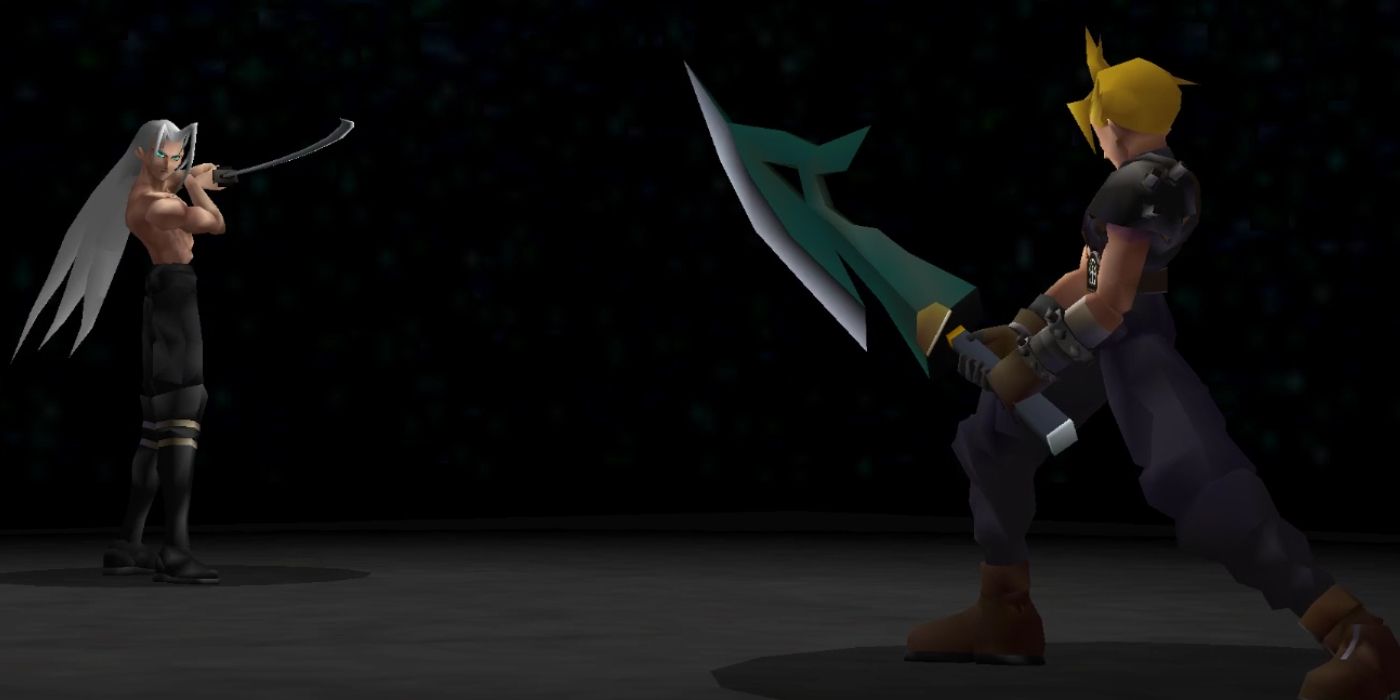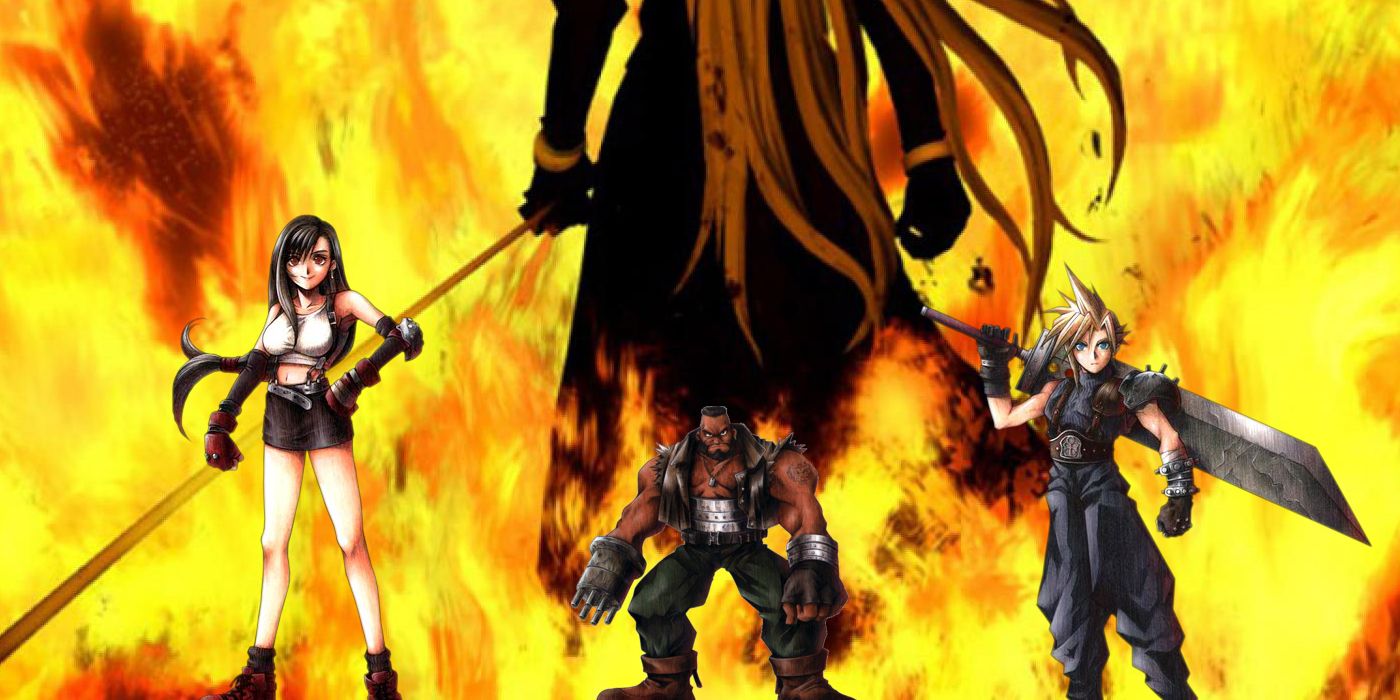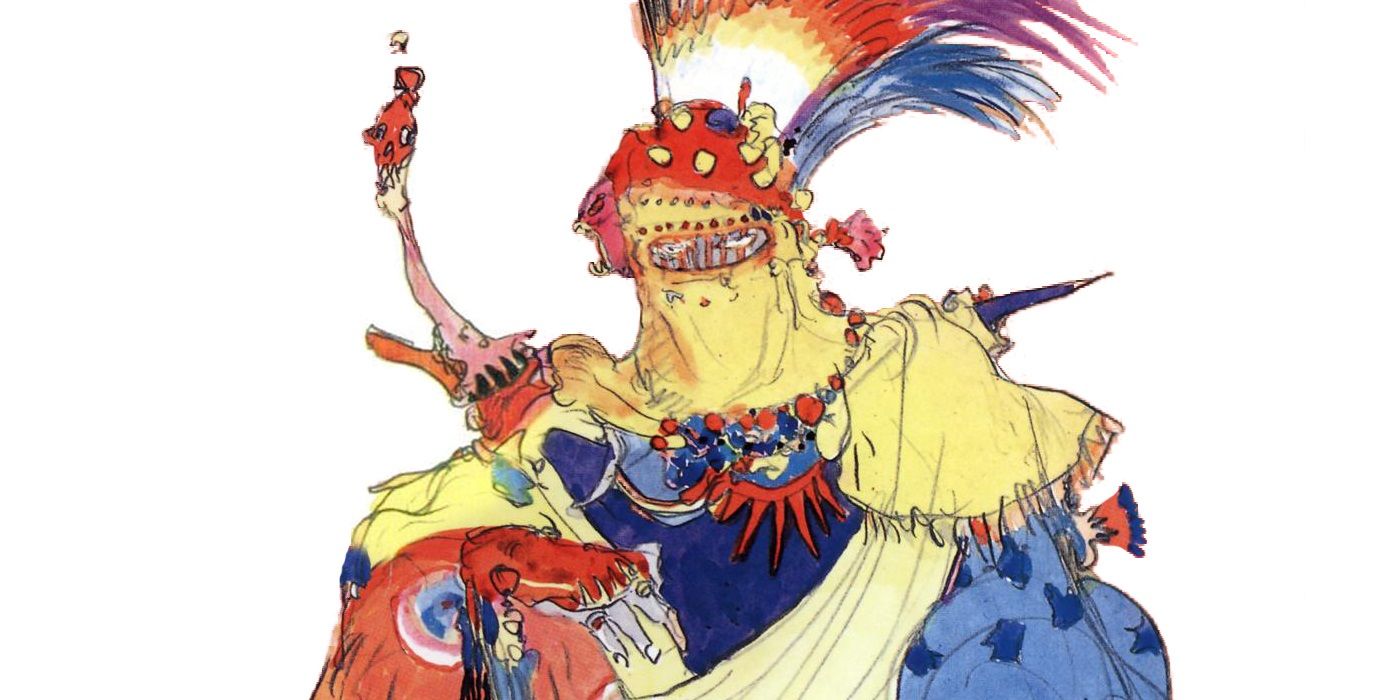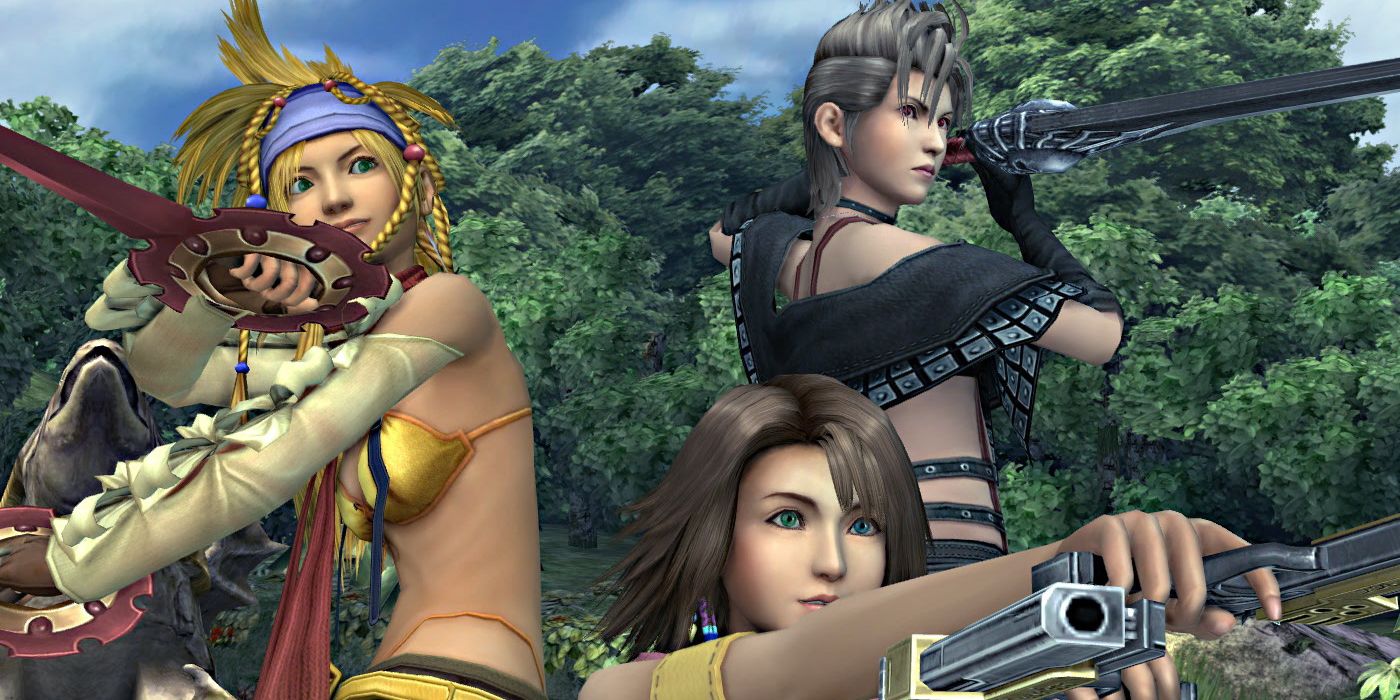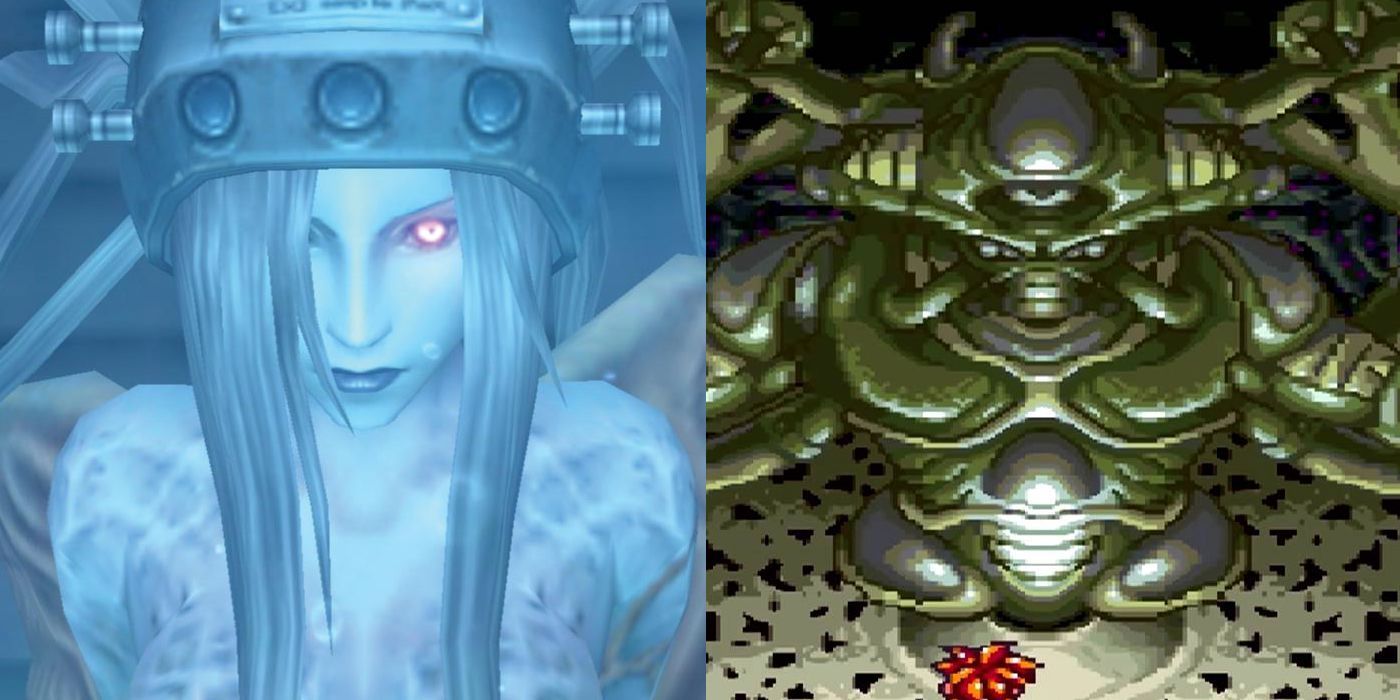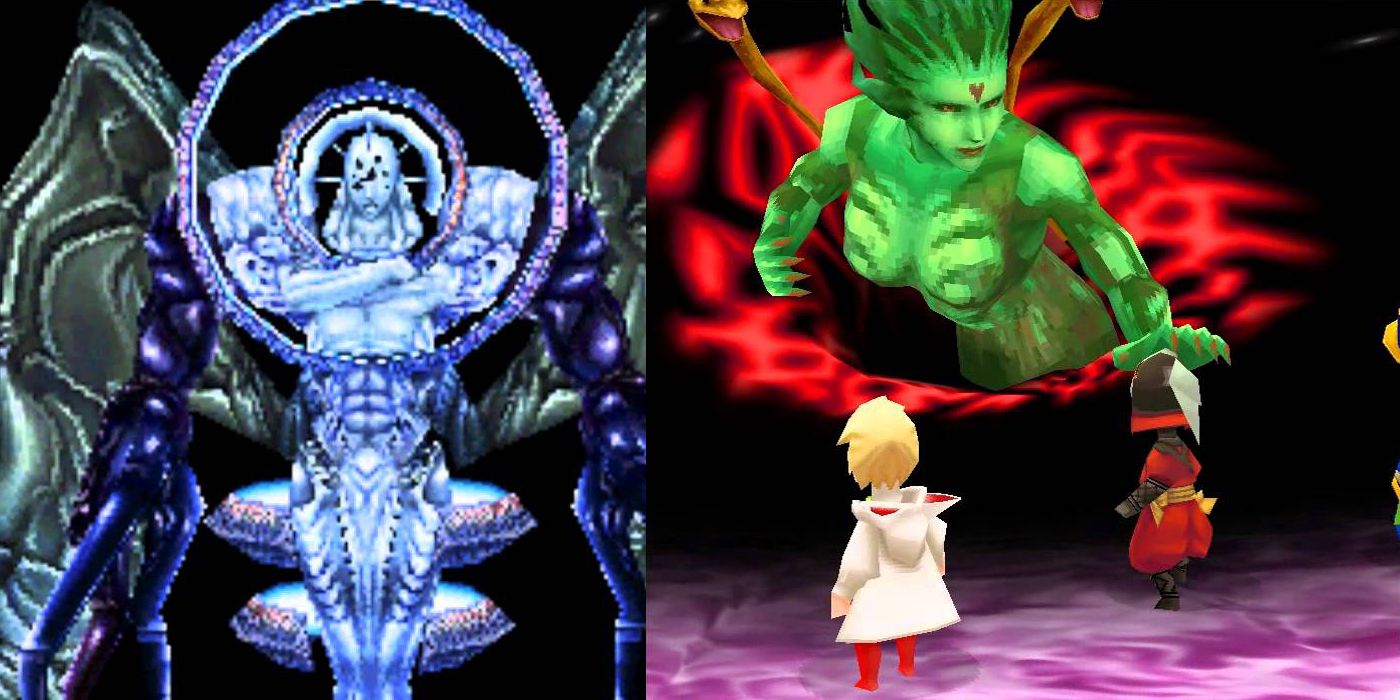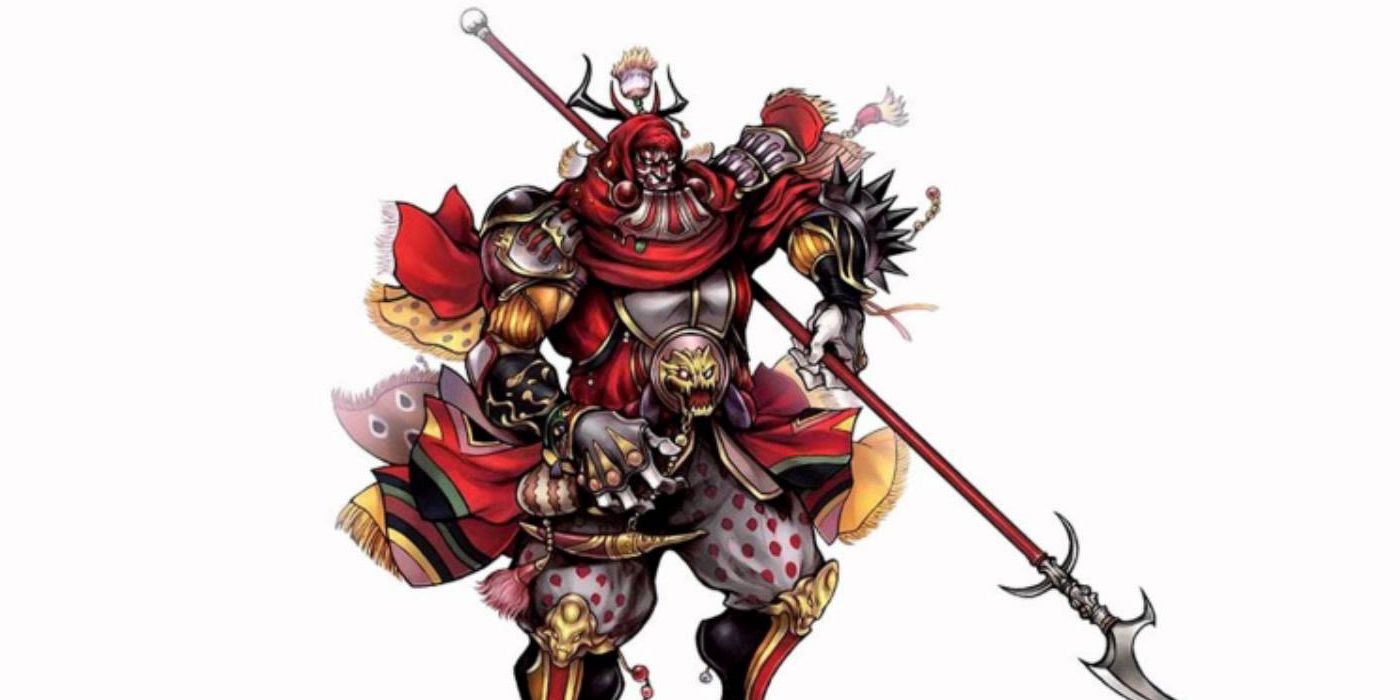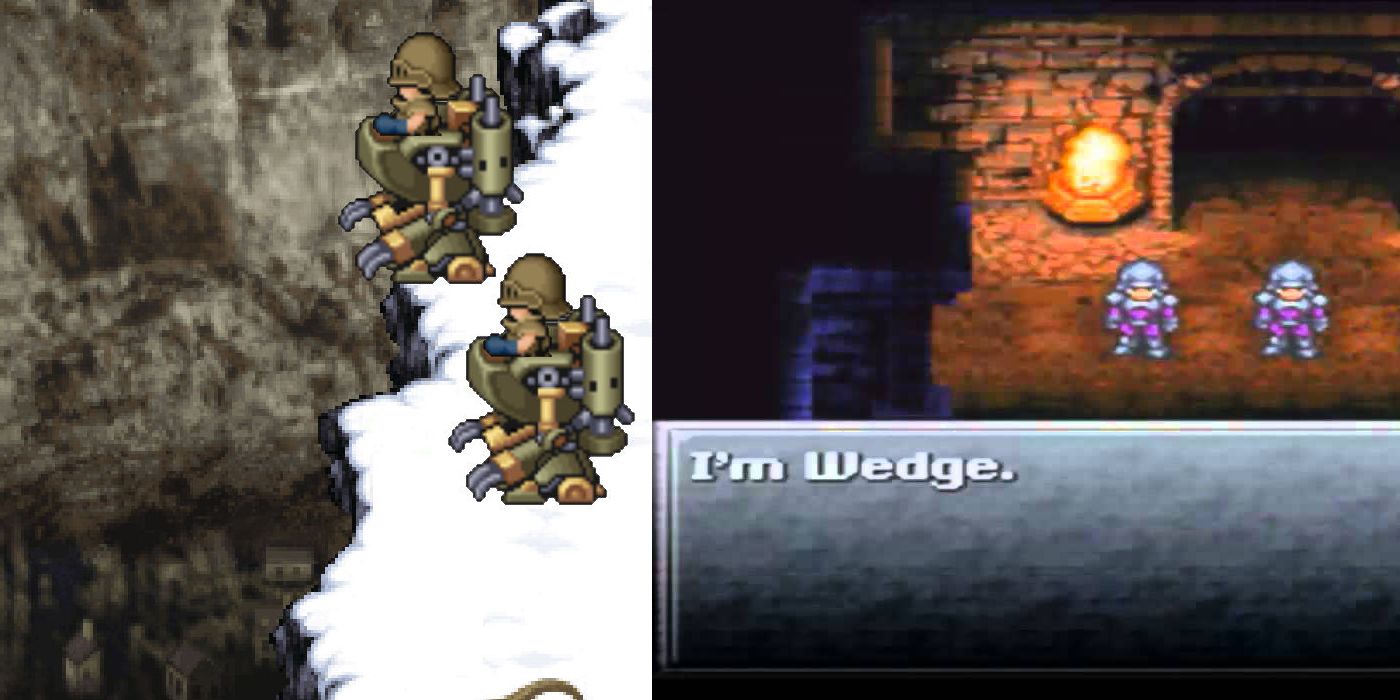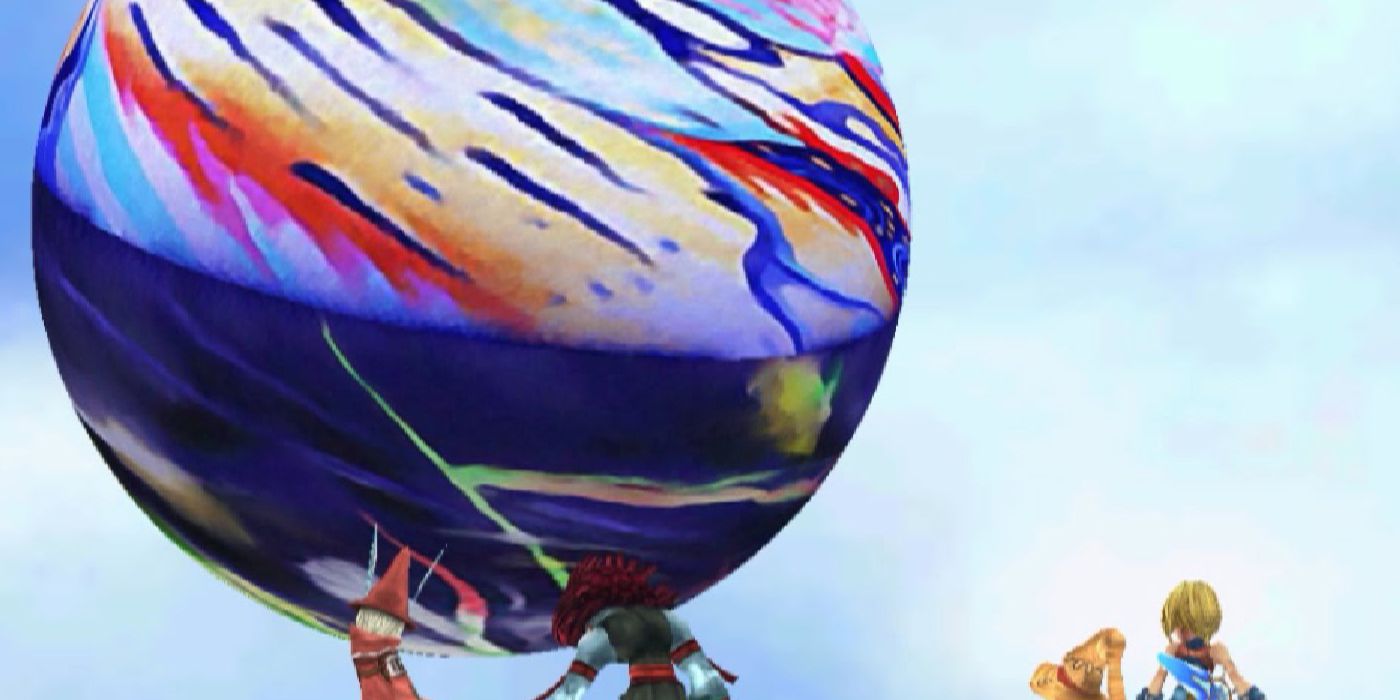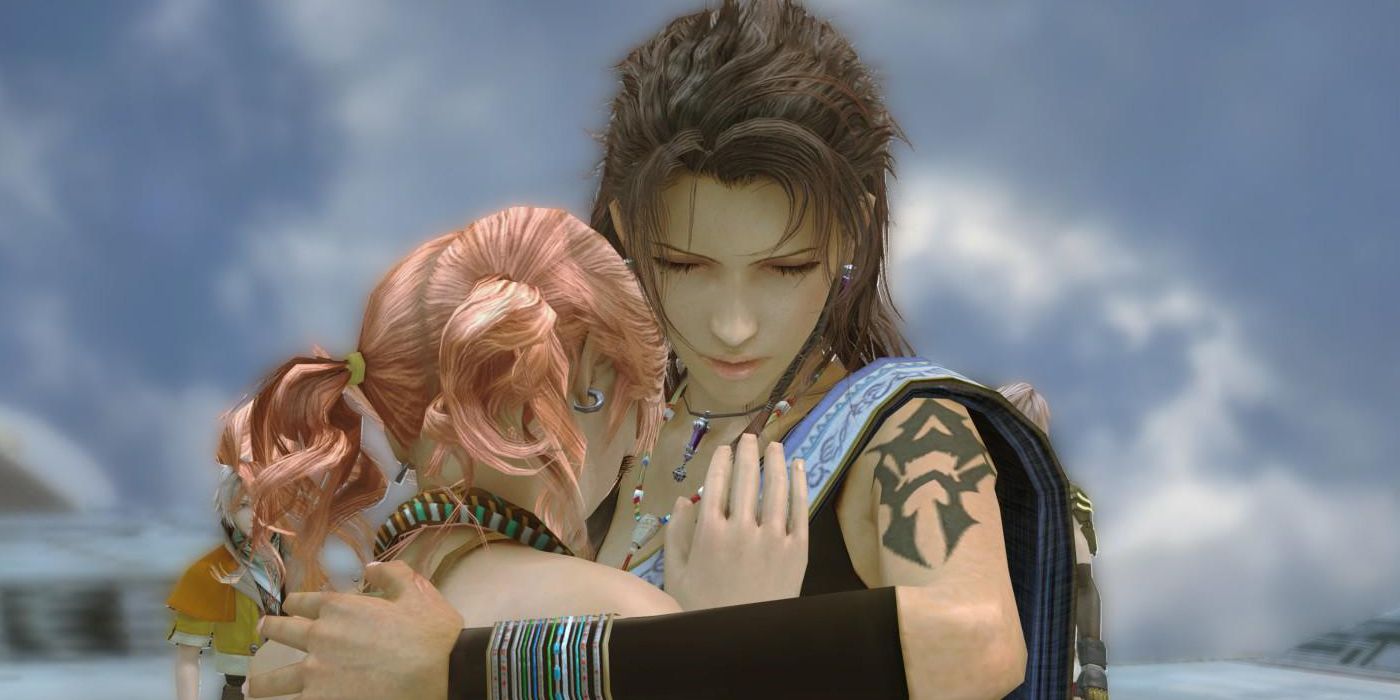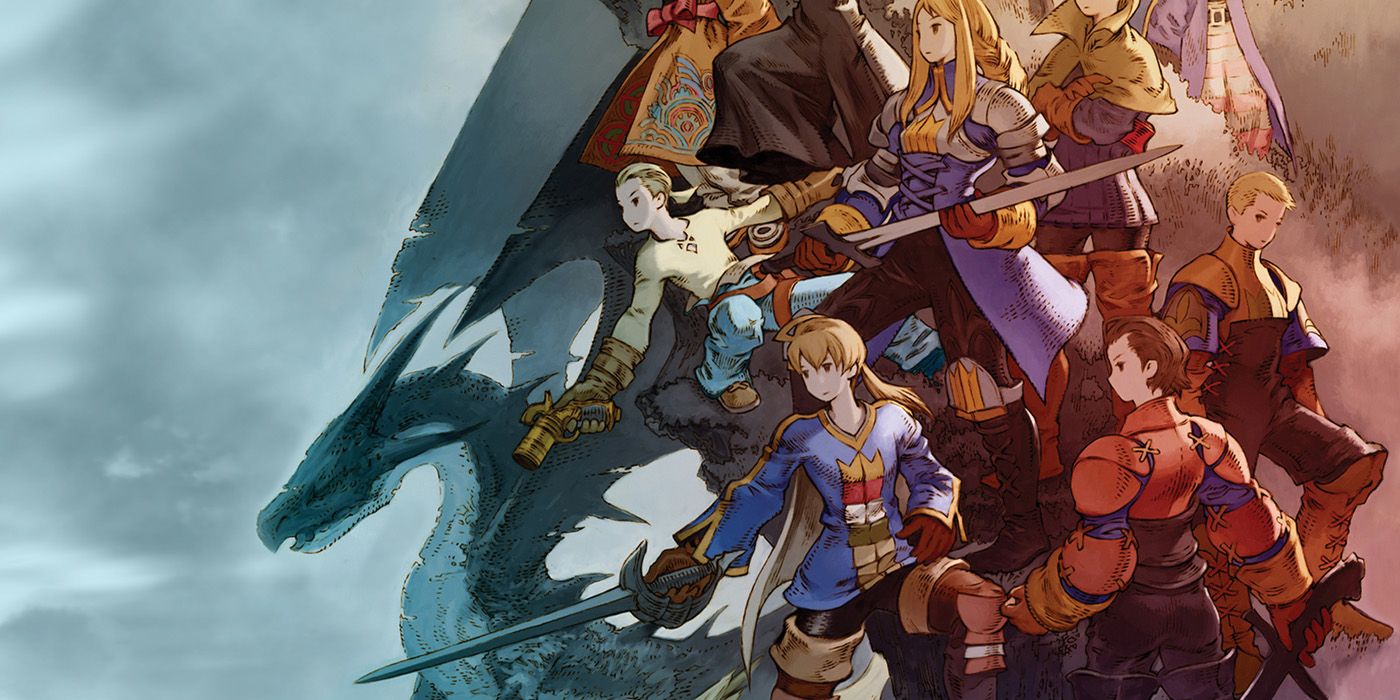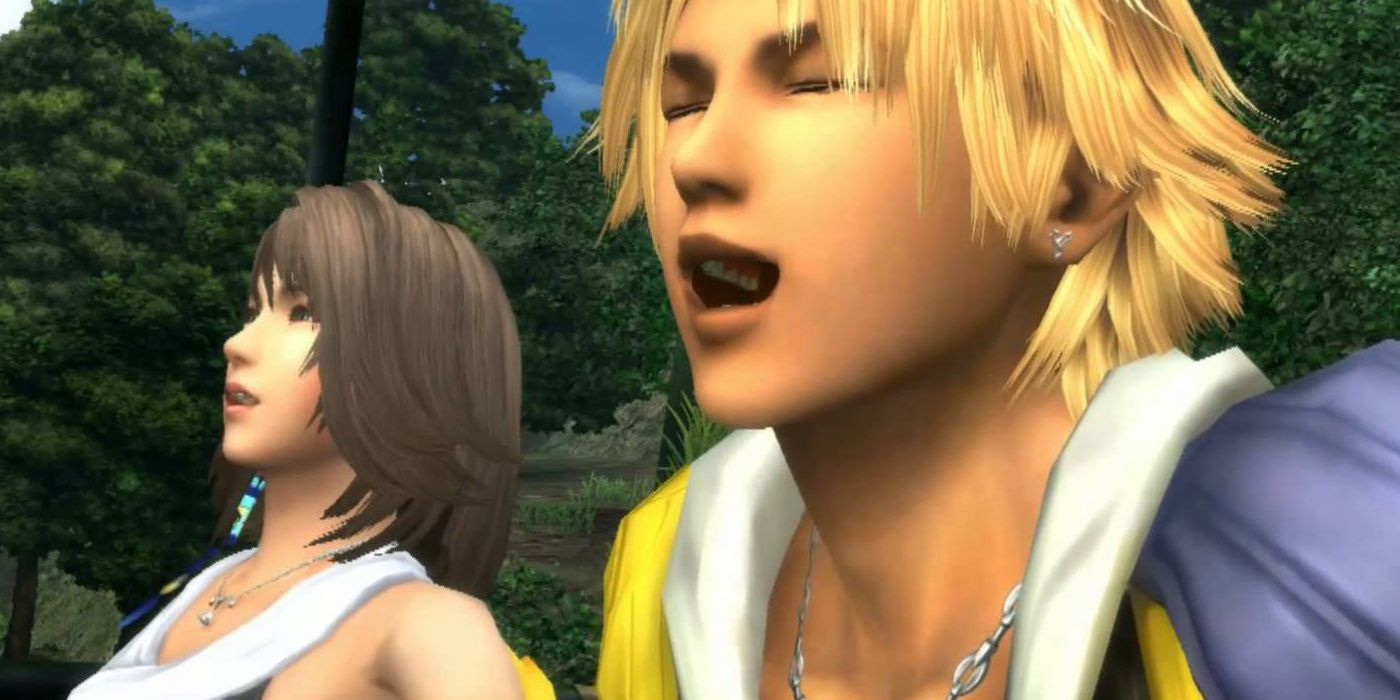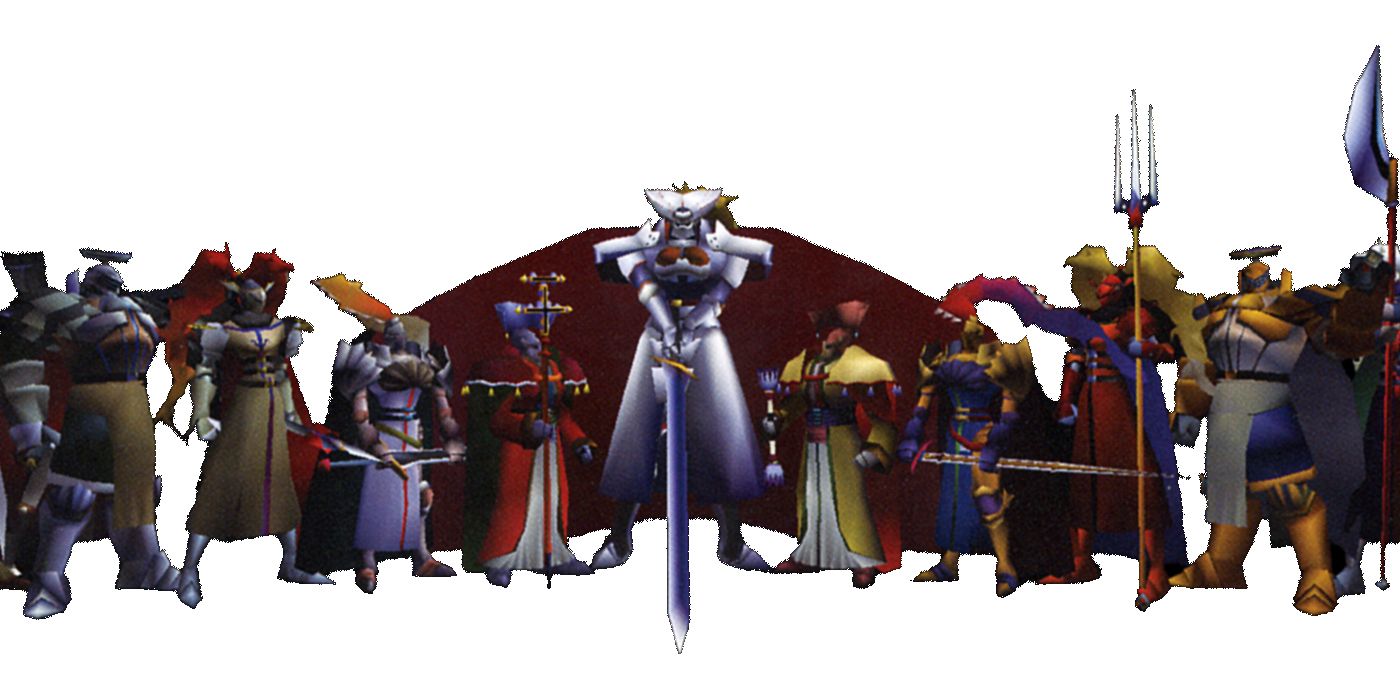Much like the Pokémon franchise, the Final Fantasy series found a foothold in the West with the help of the Internet. While the earlier games in the series had seen a modest success in America (while never being released in Europe at all), the arrival of Final Fantasy VII in 1997 changed everything. It took the series from a cult Nintendo property into a mainstream Sony franchise. The PlayStation offered both 3D graphics and the opportunity to tell more adult stories. Final Fantasy seemed to be the series that would lead the way into this new era of gaming.
The Internet buzz surrounding Final Fantasy VII helped the earlier games gain some retrospective love from the fans. Whole websites and forums were dedicated to this smash hit series, and fans could not wait to devour any piece of information about the old games, and the ones still to come.
This level of attention led to the creation of many Final Fantasy fan theories that were used to explain any discrepancies in the story. As more supplemental material was released for older titles over the years, this level of speculation only increased. We are here today to lay out the craziest ideas fans have concocted over the years. From the grim fate that awaits the cast of Final Fantasy VII, to the questioning of everything we ever knew about the protagonist of Final Fantasy VIII, here are the 15 Craziest Final Fantasy Fan Theories.
15. Cloud, Tifa, and Barret Are Going To Hell
Final Fantasy VII has received more spinoffs and supplements than any game in the series. Some of them were good (like Crisis Core), and some were terrible (like Dirge of Cerberus). Despite the popularity of the game, there are several pieces of the so-called "Compilation of Final Fantasy VII" that have never left Japan. One of these was a novel called Hoshi wo Meguru Otome (or "The Girl Who Travels The Planet"). Written by Benny Matsuyama, the book follows Aerith within the Lifestream after she is killed, and it contains a startling revelation about the fate of some of the beloved characters of the original game.
Whilst travelling through the Lifestream, Aerith encounters the three members of AVALANCHE who were killed in battle near the start of the game. Biggs, Wedge, and Jessie are trapped within limbo, as they cannot come to terms with the crimes they committed during the course of the game. The tutorial mission of Final Fantasy VII follows the members of AVALANCHE as they blow up a reactor that is draining the life of the planet. Biggs, Wedge, and Jessie feel remorse for the innocent Shinra employees that were killed during this mission, and find themselves unable to move on, becoming one with the planet.
The thing is, Cloud, Barret, and Tifa also took part in those missions. They are as equally responsible for the deaths of innocents as the other members of AVALANCHE. When their time comes, will they too be trapped in the Lifestream?
14. The Cloud Of Darkness Was Once Good?
In Final Fantasy III, the final boss of the game is known as the Cloud of Darkness. While the Cloud may resemble a beautiful woman, she is actually a force of nature, one that wants to bring all of existence to an end. The main characters cannot defeat her at first, and it takes the arrival of a group known as the "Warriors of Darkness" to stop her. They sacrifice their lives in order to make the Cloud of Darkness vulnerable, and allow the party to defeat her once and for all.
It is hinted by the Warriors of Darkness that there is another side to the Cloud of Darkness. This has come to be referred to by fans as the "Cloud of Light" theory.
The Cloud of Light was a good version of the Cloud that needed to be defeated by the Warriors of Darkness in order to sustain reality. Even if the world is shrouded in darkness, the possibility of light and life still exists, and the Cloud needs to be defeated each time in order to prevent total entropy.
This connection was further cemented in the crossover fighting game Dissidia Final Fantasy. The Cloud of Darkness is one of the playable characters, and she represents the villainous side of Final Fantasy III. The third costume for the Cloud of Darkness is called the Lucent Robe, and it shows her wearing a white & violet robe. This costume could be what the theoretical "Cloud of Light" would have looked like.
13. Rinoa Is Ultimecia
An author should always be careful about introducing time travel into a story. J.K. Rowling learned this lesson when she introduced the Time-Turner in Harry Potter and the Prisoner of Azkaban. She spent the next few years answering letters that asked why people didn't just use the Time-Turners to solve everything.
This was the problem that faced Final Fantasy VIII, as a time-travelling Sorceress named Ultimecia became the true antagonist of the game. You need to go back to the future in order to face her, and save all of creation. She wants to create something known as "time compression" in order to become a god. She took a motive from the "Final Fantasy Villain 101" handbook, and most fans didn't think much of her character at the time.
In recent years, a popular theory arose that suggested that Ultimecia is actually Rinoa, and the reason she wants to control time is because she wants to be reunited with Squall (who has long since died). This explains her motivations, and why she can use a Guardian Force when no other villain can. Her GF is also Griever, whose name & design are based upon a ring given to Rinoa by Squall. The reason Ultimecia attacks Squall is because she has lost her memory of him through her use of the Guardian Force. She still wants to compress time, but she has forgotten her original purpose for doing so.
12. Gogo is Darill
Final Fantasy VI has a huge number of optional characters to find. This is due to the fact that the party gets separated during the second half of the game, and you only need to find four characters before being able to challenge the end boss. After you gather those four, it's up to you whether you want to get the band back together first, or go and take on Kefka straight away. Chances are you will want to find everyone though, as you will miss about a third of the game's content if you skip them.
There are a few new secret characters introduced during the second half of the game. One of them is a Mime named Gogo, who is hidden within the belly of the Zone Eater monster. Being a Mime is actually one of the most badass things you can be in a Final Fantasy game, as the "mime" command allows you to copy the last move used by an ally, without any cost. If they just used the most powerful spell in the game, then the Mime can use it next... free of charge.
While Gogo's identity is never revealed in-game, many fans have speculated that it is actually Darill beneath the robes. Darill was an airship pilot, and the object of Setzer's desires. After a race between them goes awry, Darill's ship crashes. Setzer spends a year looking for her, and finds only an empty ship.
It is possible that Darill survived the crash, but lost her memory. She traveled the world, and learned the skills of a Mime, before being devoured by the Zone Eater. Her amnesia is the reason that she does not recognise Setzer when they are reunited.
11. The Three Faces Of Eve Theory
Final Fantasy IV had an incredibly epic story for its time. Due to it being released on the Super Nintendo (whereas the previous three were on the NES), Final Fantasy IV had more room in which to tell a full tale. It is also the first game in the series to introduce a philosophical concept known as the "Three Faces of Eve". Every mainstream Final Fantasy (that was not an MMO) has had three female characters, and each of them follows this concept closely.
The Three Faces of Eve represent the three most important points in any woman's life, and they are divided up into age groups. The first is the child, who represents innocence. The second is the maiden (sometimes referred to as the seductress), who represents sexuality. The third is the mother (sometimes referred to as the crone), who represents wisdom. Each Final Fantasy since IV has followed this line of thinking, so lets break it down...
Final Fantasy IV - Porom (the child), Rydia (the maiden), Rosa (the mother)
Final Fantasy V - Krile, Faris, Lenna
Final Fantasy VI - Relm, Terra, Celes
Final Fantasy VII - Yuffie, Tifa, Aerith
Final Fantasy VIII - Selphie, Rinoa, Quistis
Final Fantasy IX - Eiko, Freya, Dagger
Final Fantasy X - Rikku, Lulu, Yuna (Final Fantasy X-2 also follows this, with Rikku, Yuna, and Paine)
Final Fantasy XII - Penelo, Fran, Ashe
Final Fantasy XIII - Vanille, Fang, Lightning
Both Final Fantasy XI & XIV ignore this, as they do not have set characters/stories (due to being online multiplayers). Final Fantasy XV will break this pattern, as the cast of that game is all male.
10. Jenova & Lavos Are The Same Species
A game developer as large as Square Enix (formerly known as Squaresoft) often has many games in development at once. It is for this reason that concepts planned for one game may end up in another. This is why the Sorceress Edea from Final Fantasy VIII was originally intended to be a servant of Jenova in Final Fantasy VII. The New York City setting originally planned for Final Fantasy VII was turned into its own game, called Parasite Eve.
Both Chrono Trigger and Final Fantasy VII were in development at the same time. Fans have noticed the numerous similarities between two of the villains from those games, the planet-devouring Lavos from Chrono Trigger and the life-corrupting Jenova from Final Fantasy VII.
Some fans believe that both Lavos & Jenova come from the same species. They both travel the galaxy in search of planets to feed on. When there is nothing left to drain, they move on to the next world. They have no problem corrupting the local animals for their own benefit, and have been worshipped as gods by those unfortunate enough to discover them. Jenova has a much bigger focus on body horror than Lavos, but this can be attributed to him appearing in a SNES game, and the technology not really being able to properly show off such Lovercraftian horror.
9. Necron & The Cloud Of Darkness Are The Same Being
Both Final Fantasy VII & Final Fantasy VIII were set in futuristic worlds that combined fantasy elements in a contemporary manner. The Shinra Corporation damaged the environment with the aid of magic, and the Garden contained a private military organization that also used summon monsters. Final Fantasy IX was a return to the fantasy worlds of the earlier games, and was filled with fan service (the non-sexual kind) about the good old days of the genre.
The one part about Final Fantasy IX that no one defends is the end boss. After Kuja (the main antagonist of the game) is defeated, some new guy shows up unannounced, and you have to fight him for no real reason. The end boss is Necron, and he wants to wipe out all existence because of... reasons?
Necron has no backstory outside of wanting to destroy all life. It is because of this that some fans believe him to actually be the Cloud of Darkness from Final Fantasy III. Both share the exact same motive, both appear without warning at the end of the game, and are almost never mentioned after they are defeated. Necron is also referred to as the "Eternal Darkness" in the original Japanese version of the game. The fact that Necron is a muscly man, whilst Cloud of Darkness is a curvaceous woman, may also be a hint to their shared origins.
8. The Epic of Gilgamesh
The Final Fantasy series has lots of recurring enemies, weapons, and summoned creatures that reappear from game to game. In most cases, they are not intended to be the same thing each time, as the games all take place on their own worlds. This is why Shiva, for example, needs to be defeated as an enemy in Final Fantasy V, but was a dying resident of the Esper world who grants the party her aid willingly in Final Fantasy VI.
At the end of Final Fantasy V, the villain known as Gilgamesh sacrifices his own life to save the party. As he falls into the Dimensional Vortex, he laments that he never got a chance to fight Bartz (the main character) once more.
Gilgamesh has shown up in later games in the series, and it is hinted that this is the same character as the one from Final Fantasy V. Gilgamesh did not die when he fell into the Vortex -- he was sent to another world. He has since become a dimensional traveler the searches the cosmos for new weapons. His ultimate goal seems to be returning to his homeworld and defeating Bartz in their rematch.
7. Biggs & Wedge Traveled Through Time & Space
Biggs Darklighter and Wedge Antilles were two important characters in the Star Wars movies. Biggs was one of Luke's friends on Tatooine, and he fought in the battle to destroy the original Death Star. He was killed by Darth Vader, but his sacrifice gave Luke time to destroy the war machine/mini-planet. Wedge was the only pilot to fight (and survive) both battles against the two Death Stars.
These fan-favorite Rebel pilots apparently left an impression on some of the developers at Squaresoft, as characters named Biggs and Wedge have shown up in several games that they've produced. The Final Fantasy series is no exception to this. At the beginning of Final Fantasy VI, Terra (the protagonist) is being controlled by two soldiers named Biggs and Wedge. They are on a mission to investigate reports of a frozen Esper (summon monster). When they finally encounter the Esper, it blows Biggs and Wedge away, and they are never seen again.
One year later, Squaresoft released another classic game called Chrono Trigger. At the beginning of the game, you can visit a carnival sideshow known as Norstein Bekkler's Tent of Horrors. One of the minigames you can play in the lab is a shell game involving three identical soldiers, two of whom are known as Biggs and Wedge.
Instead of being destroyed by the Esper, perhaps Biggs and Wedge were transported into another dimension. With no money and no way to get home, Biggs and Wedge are forced to get a job with a local circus in order to make ends meet.
6. Ozma Is A Forgotten Eidolon
One of the biggest mysteries of the Final Fantasy series is the true identity of Ozma. In Final Fantasy IX, there is a long sidequest that involves breeding a Chocobo. As you progress through the sidequest, the Chocobo gains the ability to fly, at which point the players can access the Chocobo Air Garden. At the back of this area, there is a foreboding location known as an "Eidolon Cave". If you try and access it, the game will warn you about venturing further. It is here that you can battle Ozma, one of the two most powerful bosses in the game.
Ozma is a floating sphere separated by two different coloured sides. Your party won't even be able to hit him physically, without completing an obtuse sidequest first, that is. Almost nothing is mentioned about Ozma throughout the whole game. If you defeat him before challenging the other superboss, Hades, then Hades will comment on this accomplishment.
Since we're given so little information, next to nothing is known about Ozma's backstory. One of the most prevalent theories created by the fans is that he is some sort of "forgotten" Eidolon. The Eidolon's (summon monsters) are powered by mythology, and most citizens of the world will recognize them straight away. It is possible that Ozma is an Eidolon whose myths have all been forgotten. He has been reduced to a mindless sphere of energy, and lingers on in his cave, waiting for someone with enough strength to end him.
5. Fang & Vanille Are Lovers
The Final Fantasy series has yet to have an established gay main character. While there have been some minor NPCs that have exhibited same-sex desires, there has never a gay party member. The reason for this is unknown, as Squaresoft has had LGBT characters in other games. Ayla from Chrono Trigger was established as being bisexual, and Sendak the wizard from Bahamut Lagoon was an openly gay man.
While fan theories and fiction exist for almost every possible coupling in the Final Fantasy series, there is one couple whose romantic intentions are a lot more open than most. Fang and Vanille from Final Fantasy XIII are as close to being a romantic couple as possible without any actual kissing or declarations of love. The only reason it wasn't made explicit was because they were both women.
The reason for this is because Fang was originally intended to be a man. When Lightning (the main character) was being developed, she was intended to be very flirtatious. As development went on, these aspects were passed on to Fang, as they wanted to make Lightning a more serious character. Fang was changed into a woman in order to accommodate this new attitude, though her relationship with Vanille was not changed. The two caress each romantically when they first meet, share dialogue that would be mistaken for love if it were between a man and a woman, and both are transformed into naked hand-holding crystal statues at the end of the game.
4. T.G. Cid & Orran Are Not As Strong As They Seem
Two of the most overpowered characters in the Final Fantasy series are Cidolfus Orlandeau, and his stepson, Orran Durai. They both appear in Final Fantasy Tactics, and each possesses the strength of an army.
When Cid joins the party, his unique character class is "Sword Saint", and he well deserves the title. The Sword Saint class combines of all of the best moves of unique "Knight" classes in the game. Cid can kill most non-boss units in one hit, and most bosses will not last long against his assault.
Orran does not join the party, but he does fight alongside you at several points in the game. He carries the unique "Astrologer" class. While it may not sound like a powerful job, the Astrologer has some of the most powerful spells in the game. Unlike most characters, who can only target a small area of the map at a time, the Astrologer can target every enemy on the field. This allows the Astrologer to spam status effect spells on all of the enemies at once.
The story of the game is told from the perspective of one of Orran's descendants. Orran wrote an account of the War of the Lions, and was killed by the church due to heresy. It has been speculated that Orran exaggerated the combat strength of himself and his stepfather. The reason that both Cid and Orran are both overwhelmingly powerful is because we are playing Orran's fan fiction of his own family.
3. Tidus Is The (Incorrect) Memory Of Shuyin
Final Fantasy X has many surprising plot twists throughout its story, the biggest of course being the truth behind Tidus' existence, as it is revealed that he is not a true human being. Tidus is a dream made flesh, created by the lingering spirits of a dead civilization. When the main villain, Sin, is defeated, Tidus will fade away. He goes to this fate willingly, and sacrifices his life to save the world.
At least, that's what everyone thought. In Final Fantasy X-2, a recording is discovered of a person who appears to be Tidus. Yuna begins a new journey to seek out the person in this video, who is later revealed to be Shuyin, an undead warrior who is unable to pass on due to his hatred of the world, as he witnessed the murder of his lover before his eyes. Shuyin looks almost identical to Tidus, and he possesses many of the same attacks. The connection between the two is never explained in-game.
It is speculated by fans that Tidus is a corrupted memory of Shuyin. When he is recreated, he is made in the image of a hero of ancient times (Shuyin), but the memory is incorrect. This is why Tidus is a pure and heroic figure, while Shuyin was twisted by anger and resentment. .
2. The Knights Of The Round Defeated Jenova
When you reach the end of the last dungeon in Final Fantasy VII, a chain of four consecutive boss battles begins. Before the final confrontation against Sephiroth, the party must battle against Jenova-SYNTHESIS. After facing her at several points throughout the game, this is the last battle with the reawakened Jenova. The battle is pretty easy, and it has become a footnote compared to the more memorable fights that follow it. Jenova-SYNTHESIS does at least have an incredible theme.
Something very odd can happen during this battle. If you use the Knights of the Round summon against Jenova (which will kill her in one hit), then a unique code is activated for the remainder of the game. The next two boss battles (Bizarro-Sephiroth and Safer-Sephiroth) will receive a huge bonus to their hit point total.
This unusual bit of programming has led to fans speculating about a previous connection between Jenova and the Knights of the Round. We know that a group of Cetra (the ancient civilization from whom Aerith is partially descended) banded together to defeat Jenova the first time. We also know that Materia contains the crystallized memories and abilities of the Cetra. It is speculated that the Knights of the Round defeated Jenova in the past, and the memory of their victory still lingers on in the world, waiting for the moment when they would be needed once more.
1. Squall Is Dead
The story of Final Fantasy VIII takes some bizarre turns when you reach the 2nd disc. The plot revolves around a team of soldiers from a military academy going on missions, and then suddenly takes a huge detour into crazy land. The characters are soon involved with time travel, mind-swapping witches, and the revelation that they all grew up in the same home (but forgot about it).
There is a popular theory that explains all of these odd discrepancies: Squall is killed at the end of disc one, and the rest of the game is the crazed delusions of a dying mind.
At the end of the first disc of Final Fantasy VIII, Squall Leonhart and his team are sent to assassinate the evil witch known as Edea. After a sniper shot doesn't do the trick, the team have to engage her in combat. An FMV shows Edea creating a huge shard of ice and throwing it right through Squall's chest.
At the start of the second disc, Squall is completely healed, with no explanation as to how, and it's from this point on that the game goes off the rails. Squall ends up floating in space with the woman he loves, travelling back in time to kill a witch, and finding out his dad is the President! It might seem far-fetched, but most fans would rather believe in an elaborate "dying dream" explanation than a "the writers just sucked" one.
---
Do you know of any other Final Fantasy fan theories? Which one is your favorite? Let us know in the comments!
Final Fantasy XV drops on November 29th, 2016.

